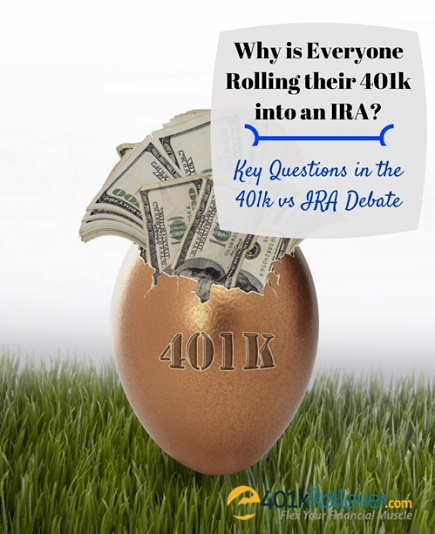Learn how investors are rolling over their retirement accounts for safety and stability against financial disaster
The 2008 financial crisis affected the lives of people all over the World. Long-standing investments were shattered, jobs were lost, and the systemic collapse of financial markets resulted in immense hardship.
Subsequently, retirement accounts took a major hit. Retirement investors had little to no control over the outcome as Wall Street bankers went gambling with complicated derivatives and other financial alchemy.
But there is a bright side.
People learned from the event. They found ways to take better care of their savings, to protect their retirement accounts from volatility and mismanagement, and decided to take the future of their finances into their own hands.
What did many retirees and future retirees do to protect their nest egg? They rolled over their employer-sponsored retirement plans to individual retirement accounts, and the statistics prove it.
The Great Retirement Account Rollover

More telling is the dates behind the retirement account rollover trend.
Between 1990 and 1994, 5% of IRA owners had made a rollover. Between 1995 and 1999, 10% had made a rollover. The number jumps to 29% between 2005 and 2009 and to 34% by the time 2010 rolls around.
Employer-sponsored retirement account rollovers increased 29% (from 5% to 34%) between the early 1990s and the years following the 2008 financial crisis. Why would this happen?
What we find is that individuals viewed that a portion of their losses resulted from the vulnerability and lack of control their funds experienced being under 401K plans, 403B plans, and other types of employer-sponsored retirement accounts.
According to The New York Times, 401K plans and individual retirement accounts lost $2.8 trillion in value in 2008. On average, U.S. workers lost almost a quarter (24.3%) of their 401K accounts. These are retirement accounts that people have been slowly building for years and years, and in one instant, their value plummeted. Part of the reason is due to employer control in the investment of these accounts.
Also in 2008, 72% of workers held 20% or less of their account balances in company stock. However, nearly 7% of 401K investors had more than 80% of their account balance invested in company stock. This exemplifies a mismanagement of those funds, which contributed to glaring losses. Having too much of your retirement account invested in company stock leaves you vulnerable to the company going out of business, getting bought out, or filing for bankruptcy, as what occurred in numerous companies after the financial crisis.
It is clear that investors wanted more control and transparency in terms of their retirement funds. But why choose self-directed IRAs over other investment options?
The Advantages of Rolling Over Retirement Accounts to a Self-Directed IRA
Self-directed IRAs act independently of the ups and downs of one’s employer. Funds in these accounts will not be affected if your company goes out of business, if it gets bought out, or if it files for bankruptcy. Many 401K plans were absorbed or liquidated during the financial crisis. Investors want to protect themselves from the same outcome repeating itself.
The freedom and flexibility of IRA investment options also makes rolling over to a self-directed IRA an attractive option. You have the freedom to invest in real estate, private businesses, and precious metals (a relatively stable investment) which employer-sponsored plans may not support. You also have the option of doing your own research and diversifying your funds to take on the risk only you are willing to.

- Certificate of Deposits (CD’s)
- Bonds
- Mutual Funds
- Exchange-Traded Funds (ETF)
- Stocks
- Annuities
- Real Estate
- Precious Metals
With a 401K, the plan is usually set up by your employer with a large financial institution, limiting your investment options to what the institution offers.
In addition, fees for IRAs are typically lower than that of 401K plans, and your individual retirement account will retain all of the accompanying tax benefits. Stability, lower cost and control are just a few of the advantages in an IRA vs 401k account.
How to Rollover your Retirement Accounts
We advise consulting a tax advisor if you feel that rolling over to a self-directed IRA is right for you. There are many companies that understand the process, know the market, and will be very willing to guide you through the process. With a competent professional, it should not take more than two to three weeks to have your funds fully rolled over into your hands and invested to your liking.
401kRollover.com is dedicated to providing accurate, up-to-date information about 401K rollovers and custodian-to-custodian transfers, so rest assured that we are here to help and guide you to a healthy and vibrant financial future.







